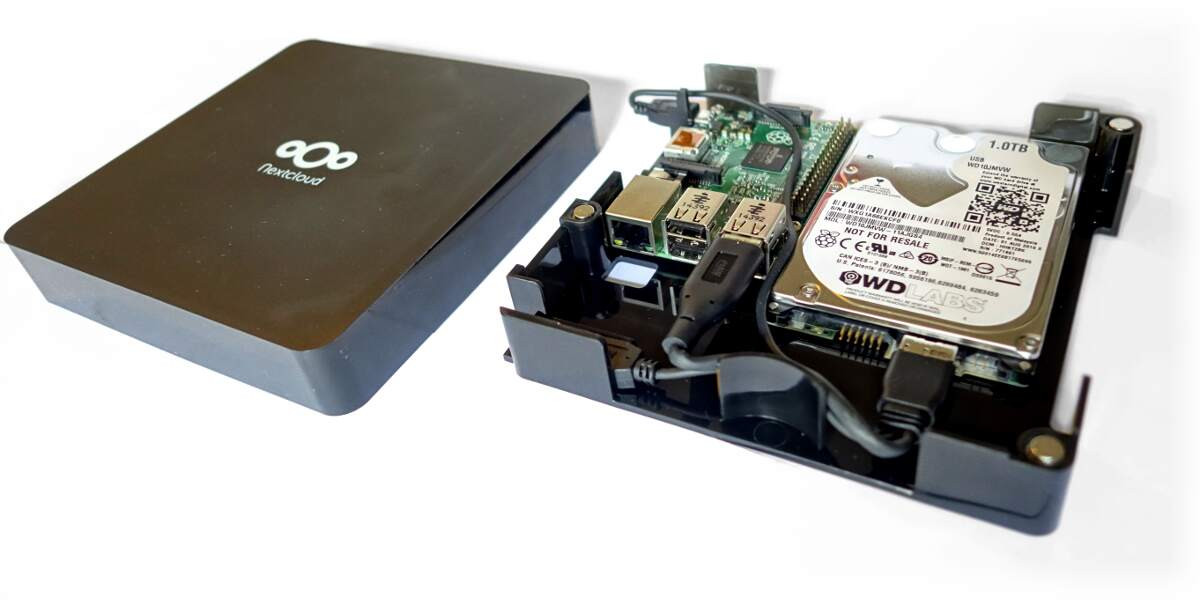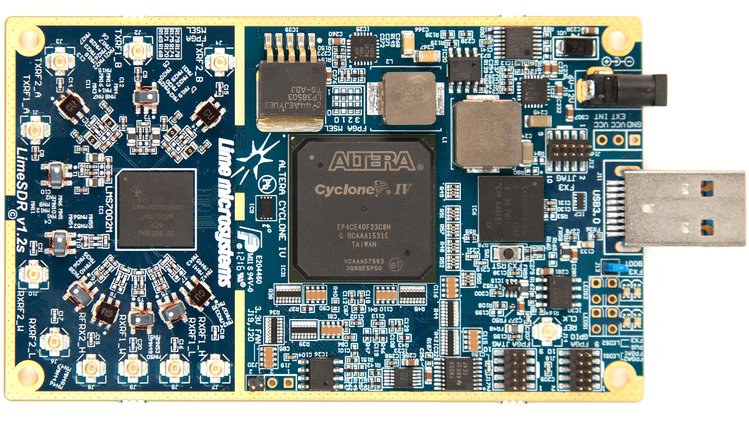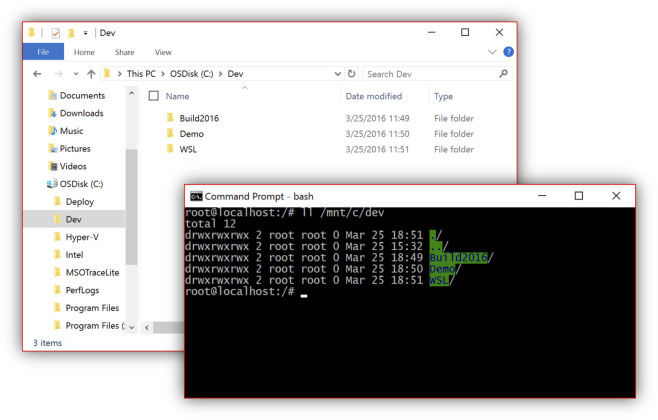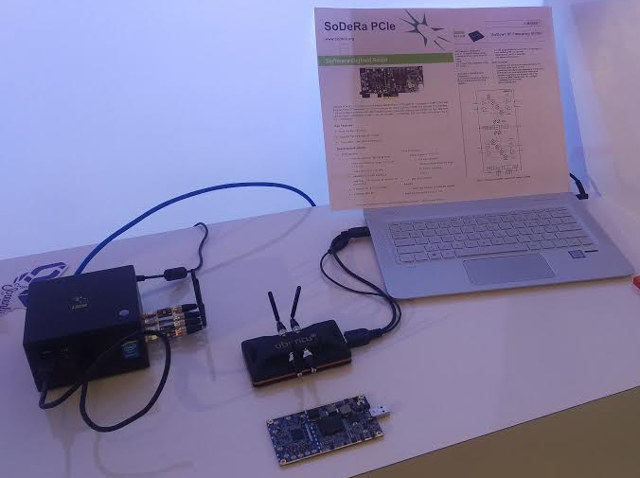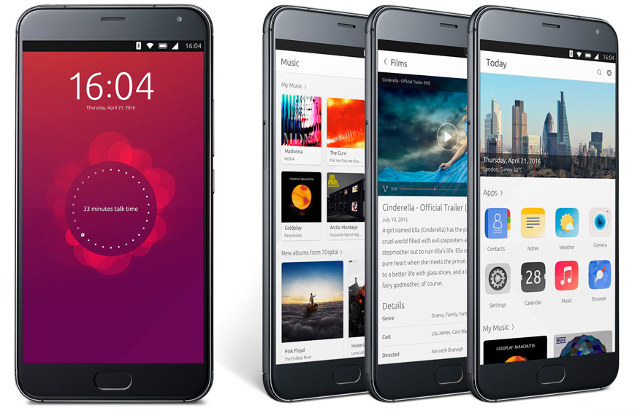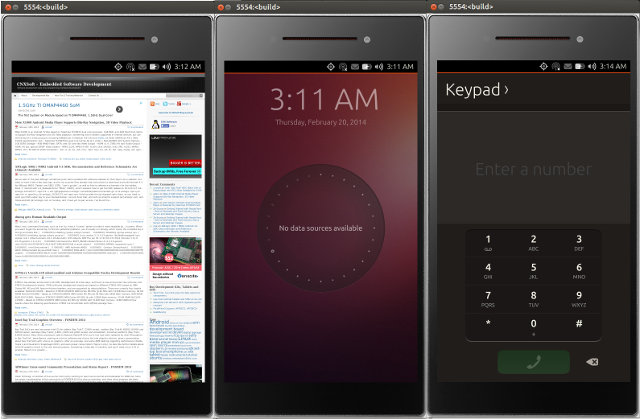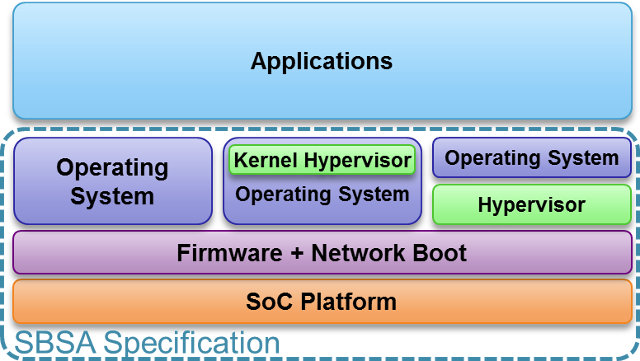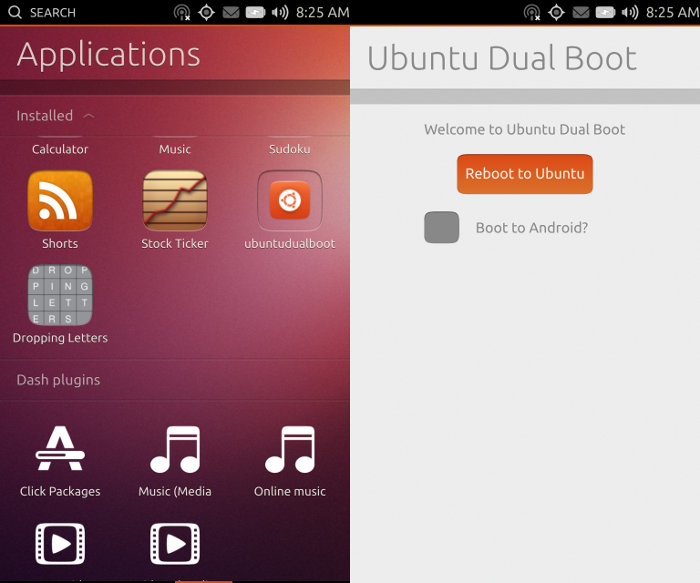While there are plenty of cloud services provided by companies such as Dropbox or Google, you may want to manage you own private cloud server instead for performance and/or privacy reasons. One typical way to do this is to install Owncloud or Nextcloud (a fork of Owncloud), on a Linux computer or board such as Raspberry Pi 3. The former is usually a little expensive for just this task, the latter often results in cable mess, and in both case, some people may not be comfortable with setting it all up. Nextcloud, Western Digital, and Canonical seems to have addressed most of those issues with Nextcloud Box including a 1TB USB 3.0 WDLabs harddrive, Nextcloud case with space for the drive and small ARM or x86 Linux development boards, and a micro USB power supply. The kit also include a micro SD card pre-loaded with Snappy Ubuntu Core, Apache, MySQL […]
LimeSDR Open Source Hardware Software Defined Radio Goes for $199 and Up (Crowdfunding)
Canonical and Lime Micro showcased SoDeRa software defined radio (SDR) a couple of months ago, with a promise to launch a crowdfunding campaign later this year. They’ve fulfill their promise, and launched the open source SDR, renamed to LimeSDR, on Crowdsupply. LimeSDR board specifications: FPGA – Altera Cyclone IV EP4CE40F23 Altera FPGA compatible with EP4CE30F23 System Memory – 256 MB DDR2 SDRAM RF Lime Microsystems LMS7002M RF transceiver with continuous coverage of the frequency range between 100 kHz and 3.8 GHz; 61.44 MHz bandwidth 4 x TxOut and 6 x RxIn U.FL connectors Power Output (CW): up to 10 dBm Wi-Fi, GSM, UMTS, LTE, LoRa, Bluetooth, Zigbee, RFID, Digital Broadcasting, configurable through apps. USB – 1x micro USB3 via CYUSB3014-BZXC Cypress Microcontroller for control, data transfer and power Misc – Status LEDs, RGB LEDs, 4x switches Power – USB or external power supply Dimensions – 100 mm x 60 mm The board […]
Microsoft Brings Bash on Ubuntu on Windows 10
Yes, you’ve read that right, and no, it’s not an April Fools’ Day prank, Microsoft and Canonical really cooperated to bring Ubuntu user space to Windows 10 allowing developers and others to run bash commands directly into Windows. All you’ll need to do is to install Ubuntu on Windows app, hit the Windows key, and type bash to get a terminal window. Once you are in bash, you can run any Ubuntu command line, including apt-get to install packages, just like if you were in a terminal in Ubuntu, and all binaries are the same as in Ubuntu, as Microsoft implemented new infrastructure within Windows called the Windows Subsystem for Linux (WSL). That means Ubuntu runs without Linux, but instead the implementation is a conversion layer somewhat similar to Wine to run Windows programs in Ubuntu, or Libhybris to convert Linux calls to Android calls. Dustin Kirkland, in charge of […]
Canonical Introduces SoDeRa Software Defined Radio Solution for Base Stations and IoT Gateways
Canonical and Lime Micro have jointly announced SoDeRa low-cost software defined radio (SDR) which can be programmed to support any type of wireless standard including UMTS, LTE, LoRa, Bluetooth, Zigbee, RFID, Digital Broadcasting, and more, and aiming at helping operators reducing costs & complexity, while speeding up time to market and providing greater flexibility. The kit will include a board with the following specifications: FPGA – Altera Cyclone IV EP4CE40F23 Altera FPGA (compatible with EP4CE30F23) System Memory – 256 MB DDR2 SDRAM RF Lime Microsystems LMS7002M Transceiver with continuous Frequency range of 100 kHz – 3.8 GHz 4 x TxOut and 6 x RxIn U.FL connectors for RF cables Power Output (CW): up to 6.5 dBm Wi-Fi, 2G, 3G, LTE, any other air interfaces USB – 1x micro USB3 via CYUSB3014-BZXC Cypress Microcontroller for control, data transfer and power Misc – Status LEDs, RGB LEDs, 4x switches Dimensions – 100 mm x […]
Meizu PRO 5 Ubuntu Edition Smartphone is Powered by Exynos 7420 Processor, Does NOT Support Desktop Mode Yet
So far most smartphones with alternative operating systems had rather low-end to mid-end hardware specifications, but according to OMG! Ubuntu!, Canonical and Meizu are about to change that, as they should be about to launch an Ubuntu Edition of Meizu PRO 5 smartphone with an Exynos 7420 octa-core Cortex A57/A53 processor coupled with 3 to 4GB RAM, 32 to 64GB storage., and a 5.7″ display with 1920×1080 resolution. The device will support convergence, meaning it could work in mobile or desktop mode, just like the recently announced BQ Aquaris M10 tablet. [Update: Finally, the USB-C port on Meizu PRO 5 does not support external display, so no convergence, unless Canonical decides to implement convergence over Miracast…]. Meizu PRO 5 Ubuntu Edition specifications: SoC – Samsung Exynos 7 Octa (Exynos 7420) octa core processor with 4x Cortex A57 core @ 2.1GHz + 4x Cortex A53 cores @ 1.5Ghz, and Mali-T760 MP8 GPU […]
Try Ubuntu Touch on Your Computer with Ubuntu Touch Emulator
Canonical has just announced Meizu (China) and Bq (Europe) will be the first manufacturers to launch Ubuntu Touch phones at the end of 2014. But if you want to try Ubuntu Touch, and don’t own a Google Nexus 4 or 7, or simply don’t want to flash Ubuntu Touch to your devices, you can do so using Ubuntu Touch x86 Emulator in your computer running Ubuntu , or in an Ubuntu Virtual machine in Virtualbox or VMWare. The emulator has been available since last November, but Ricardo Salveti announced an updated version, the first public preview, with the following changes: Better TLS handling (not using the Android slots, but using pthread_set/getspecifics instead) Qt packages compatible with OpenGL ES 2.0 available at https://launchpad.net/~rsalveti/+archive/qt-gles-test It has been tried on Ubuntu Trusty (14.04), but I could run it just fine on Ubuntu Saucy (13.10), by following the instructions below in a terminal: Download […]
ARM Unveils Server Base System Architecture Specification (SBSA) to Standardize ARM based Servers
64-bit ARM based servers should hit the market later this year or earlier in 2015 with SoCs such as Applied Micro X-Gene or AMD Opteron A1100. ARM still has the lead in terms of efficiency with a lower dollar per watt ratio, but Intel is closing in with their new Avoton server-on-chips. However, there’s one aspect where Intel is clearly in the lead: standardization and compatibility. ARM is very flexible, and allow SoC designers to create more or less what they want, but it comes at the cost that most ARM based systems are not capable of running mainline Linux, and instead use vendor trees. With many applications, that may not be critical, but when it comes to data-centers, companies want to be able to run the latest Linux version with the latest security patches as soon as possible, and want to lower the total cost of ownership (TCO), so […]
Canonical Releases Ubuntu and Android Dual Boot Developer Preview
Canonical announced Ubuntu for Phones at the very beginning of the year, and the operating systems have been ported to several phones since then. The only problem is that if you just want to try it, you’d have to replace your Android installation. To work around this problem, Canonical just released Ubuntu and Android dual boot developer preview, that installs both OS on your smartphone, and one app in Ubuntu and Android, let you choose whether you want to boot Ubuntu or Android. The installation requires rewriting the Android recovery partition, and changes the partition layout, so Canonical only recommends Ubuntu Dual boot to developers, in case something goes wrong during installation. Having said that, the installation instructions do not seem particularly difficult to follow, as it’s just the case of running one script (dualboot.sh), after you’ve made sure your device is rooted, connected your phone to a Linux PC […]


